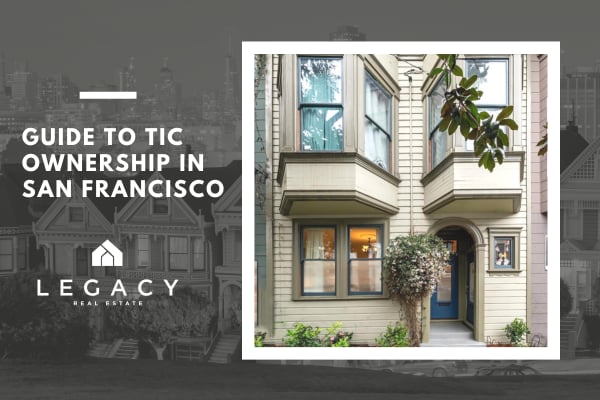The History of In-law ADU Units in San Francisco
March 24, 2023

March 24, 2023

Author - Scott Conway, Realtor®
The History of In-law Units in San Francisco: Some background to better understand the ADU Phenomenon in the City
Background
Why are there so many in-law units in San Francisco? To answer this question one must first understand the background story of ADUs and the fascinating history of housing in San Francisco.
It's hard to imagine San Francisco without the presence of in-law units. One might expect there to be many more high-rise apartment buildings to accommodate the growing population. Or perhaps there would be fewer homes built for single families and more multi-family properties. Certainly, the quality of life in San Francisco would be vastly different if not for the presence of in-law units, aka ADUs.
1. History of ADUs
San Francisco has been building in-laws since the dawn of the 20th century when single-family homes, or in many cases, mansions were often converted into multi-unit buildings to provide housing for the growing population. You might even live in one of these former mansions and not even know it. Dividing a large single-family home into smaller units to house multiple families by creating in-law units has been a very common practice over the last century or so. Many of these added units were located in the basement or attic and were often rented out to supplement the income of the property owner.
The 1940s and 1950s saw San Francisco's population surge, and the city began to regulate the creation of in-law units. The city's first zoning code, adopted in 1948, established minimum lot sizes and setback requirements that limited the creation of new in-law units. However, the code did not prohibit the use of existing in-law units, and many continued to be used as rental properties or housing. In the 1970s, the city promoted the creation of in-law units as a way to provide affordable housing. In 1983, the city went further and adopted an ordinance that allowed property owners to create in-law units but did not require property owners to attain permits for these units. The ordinance only required that the units be located within the existing building footprint and meet certain size and design standards. Many of these units still exist today and have comfortably housed families for decades. But they have an ‘unwarranted’ status. Realtors often refer to these spaces as ‘bonus’ areas within a home but they often don’t include these areas in the livable square footage total of the home.
As housing costs continued to soar in the 2010s, the city began to streamline the permitting process for in-law units to make it easier for property owners to create legal, safe, and habitable units. Today, in-law units are an important part of San Francisco's housing landscape and provide affordable housing options for many of the city's residents.
2. Why are ADUs so popular
In-law units are more recently seen by city officials as a way to effectively increase the housing supply in a tight housing market and provide affordable options for a growing population. Many San Francisco homeowners have built in-law units within the footprint of their existing homes to house family members, produce rental income streams, or provide housing for themselves while renting the rest of the home. What’s not to like about extra housing and income streams, right?
3. Unwarranted and Bonus space explained
It's important to note that many in-law units in San Francisco have been built without the benefit of permits from the San Francisco Building Department and this could present an added layer of risk for new homeowners, especially if those properties have existing renters. Prospective homebuyers should consult a qualified real estate attorney about unpermitted or unwarranted in-law units within the home they are interested in purchasing.
I hear from many prospective homebuyers that they are concerned about the ADU being 'illegal’ or ‘unwarranted.’' But should they be?
If they plan to use the space as storage and the realtor is listing the space as a ‘bonus’ space they are very likely not going to run into any issues. Buyers should check with the building department website to better understand if the property has permission to build and or if space has been flagged for review. Again, we always recommend contacting a qualified real estate attorney for professional advice on these matters. It may cost some money upfront but in the long run, it's worth it.
The city will need to continue to explore new approaches to incentivize property owners to obtain permits and build safe, legal in-law units that meet the needs of the city's residents. This may be an opportunity for future homeowners. Creating a safe legal space within a home that previously didn’t exist is a great way to increase your quality of life while living in the home while also creating a potential for appreciation of your home’s value. It should not be something to fear as it is a great opportunity to maximize the value of your home and the use of the property. But careful examination is critical.
About the author:
Scott Conway received his real estate license in 2003 and has since been helping his clients achieve their dream of home ownership. He has also been an investor during that time acquiring and selling many homes in the Bay Area and California.
Stay up to date on the latest real estate trends.

January 6, 2026
In December, there were 24 single family and condo home sales in Pacifica.

January 2, 2026
A Beginner-Friendly Guide to TIC Ownership in San Francisco

January 2, 2026
Last month, single-family homes closed at an average of $1,007 per square foot.

December 23, 2025
November data shows a tighter market - higher median prices, fewer listings, and faster sales across San Francisco.
You’ve got questions and we can’t wait to answer them.